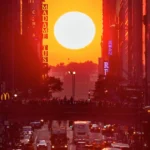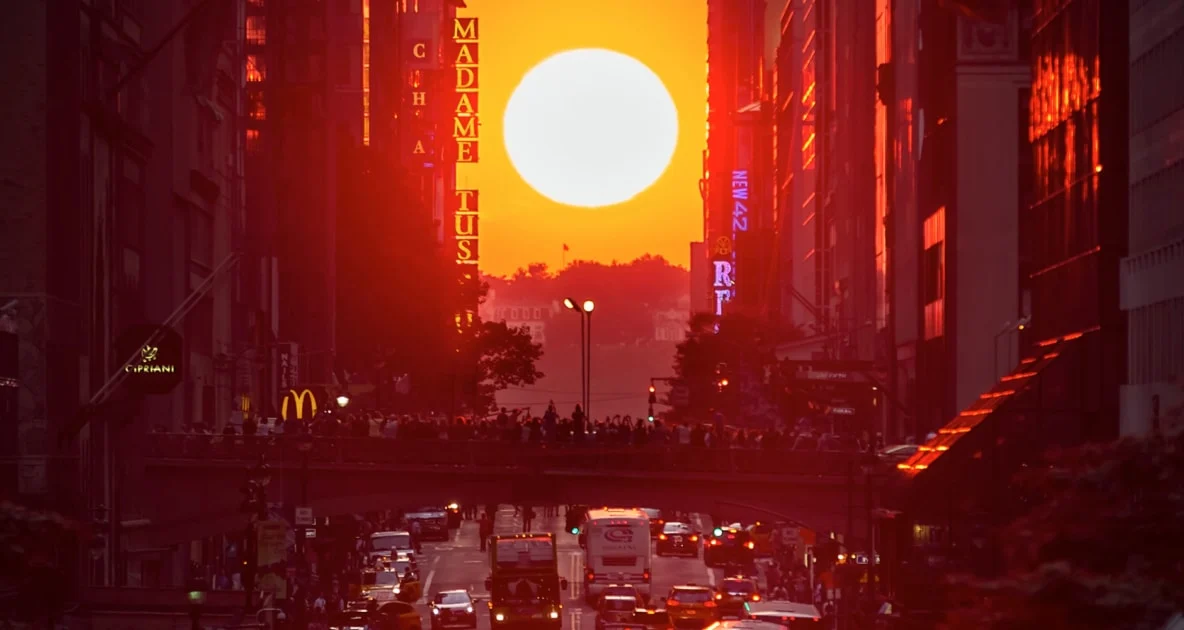On 30 May, New Yorkers will be able to observe the first Manhattanhenge in 2024. This is the name given to the beautiful phenomenon when the Sun sets right in the middle of the streets running from east to west of Manhattan Island. But why is this event so popular and who coined the term “Manhattanhenge” in the first place? Let’s find out.
Why does Manhattanhenge appear?
Unlike many cities, which were built up rather chaotically, buildings in Manhattan are located in accordance with the master plan adopted in 1811. In fact, we have a huge grid of parallel streets that perpendicularly cross the avenues. As a result, Manhattan can be a kind of seen through.
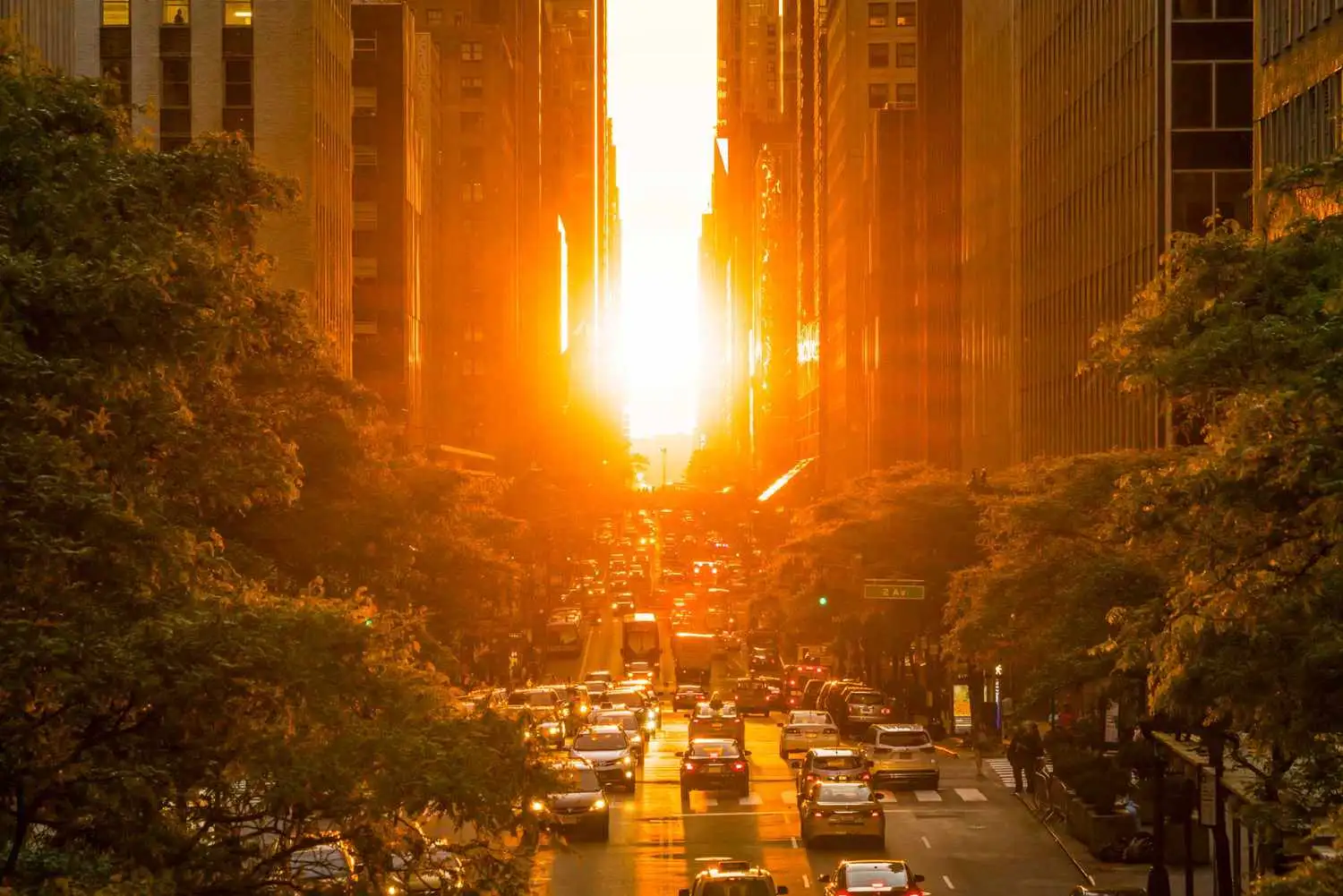
The island itself stretches from northeast to southwest. It turns out that the city grid is tilted by about 29° to the meridians. That’s why several times a year in Manhattan, you can see the sun setting or rising right in the middle of streets.
Where did the term “Manhattanhenge” come from?
Manhattanhenge was popularised by astrophysicist Neil deGrasse Tyson. He first described this event in an article published in 1997 in the Natural History journal. The term itself appeared a few years later and refers to Stonehenge. This structure is known for the fact that on the day of the summer solstice, the Sun rises behind the so-called Heel Stone in the northeastern part of the horizon and its first rays illuminate the heart of the ancient megalith.
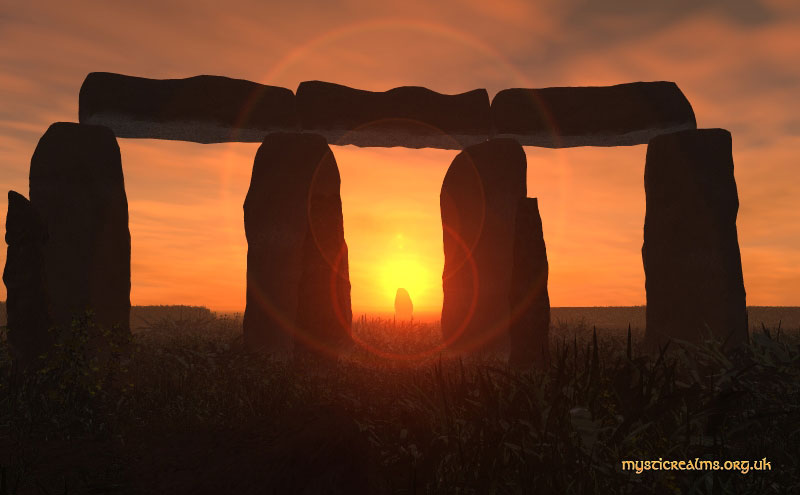
According to Tyson, he also coined the term “Manhattanhenge”. The astrophysicist was inspired by his youthful memories. At the age of 15, he visited Stonehenge during an expedition led by Gerald Hawkins, the scientist who first suggested that this place was not an ancient sanctuary but an astronomical observatory. Tyson remembered the trip so much that, thinking about the sunrise and sunset in Manhattan, he decided to pay homage to it.
Why is Manhattan Bridge so popular?
It’s simple — it’s very beautiful. When the Sun sets exactly in the middle of a street surrounded by skyscrapers, it creates the illusion of a kind of stone canyon and looks very impressive in photographs. Not surprisingly, the event attracts a lot of people — both locals and tourists — who are looking for the most photogenic places.
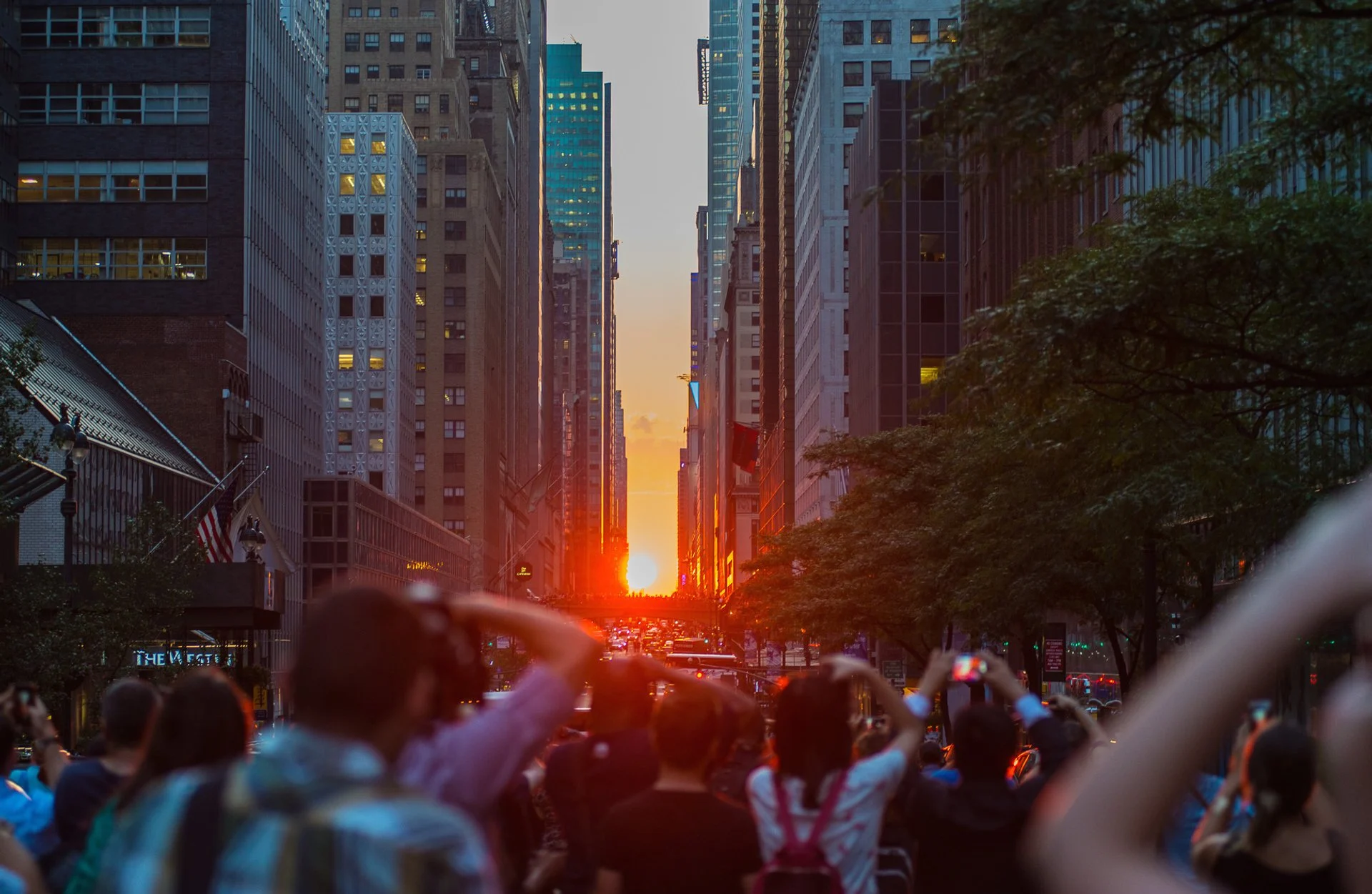
When you can see Manhattanhenge
If the rectangular grid of Manhattan were oriented strictly north-east, Manhattanhenge would coincide with the equinoxes. However, it is rotated. Therefore, Manhattanhenge can be seen approximately 21 days before and after the summer solstice. In 2024, these are 30 May and 11 July, respectively.
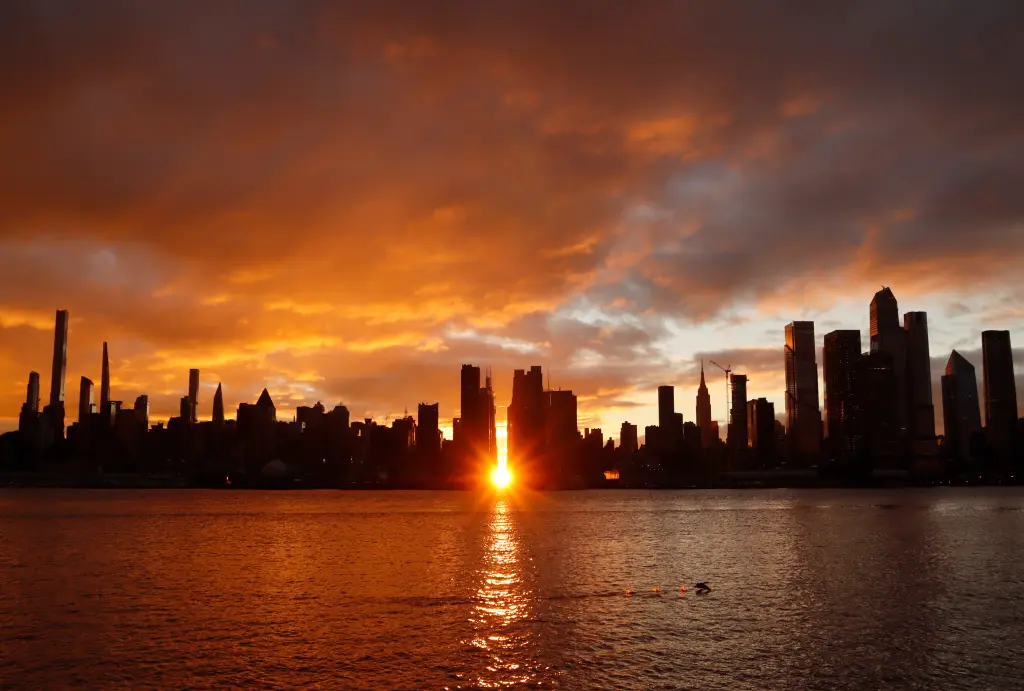
The day before the first full Manhattanhenge and the day after the second, you can also see a half-sun: this is when half of the solar disc is still above the horizon and the other half is already below. In addition, in December and January, you can also observe the so-called reverse or winter Manhattanhenge, when the Sun rises instead of setting. However, it is much less popular with the public than the summer Manhattanhenge.
Are there any analogues of Manhattanhenge?
Of course, there are. Similar phenomena, when the Sun sets or rises exactly in the middle of the street, can be observed in cities with similar rectangular planning.
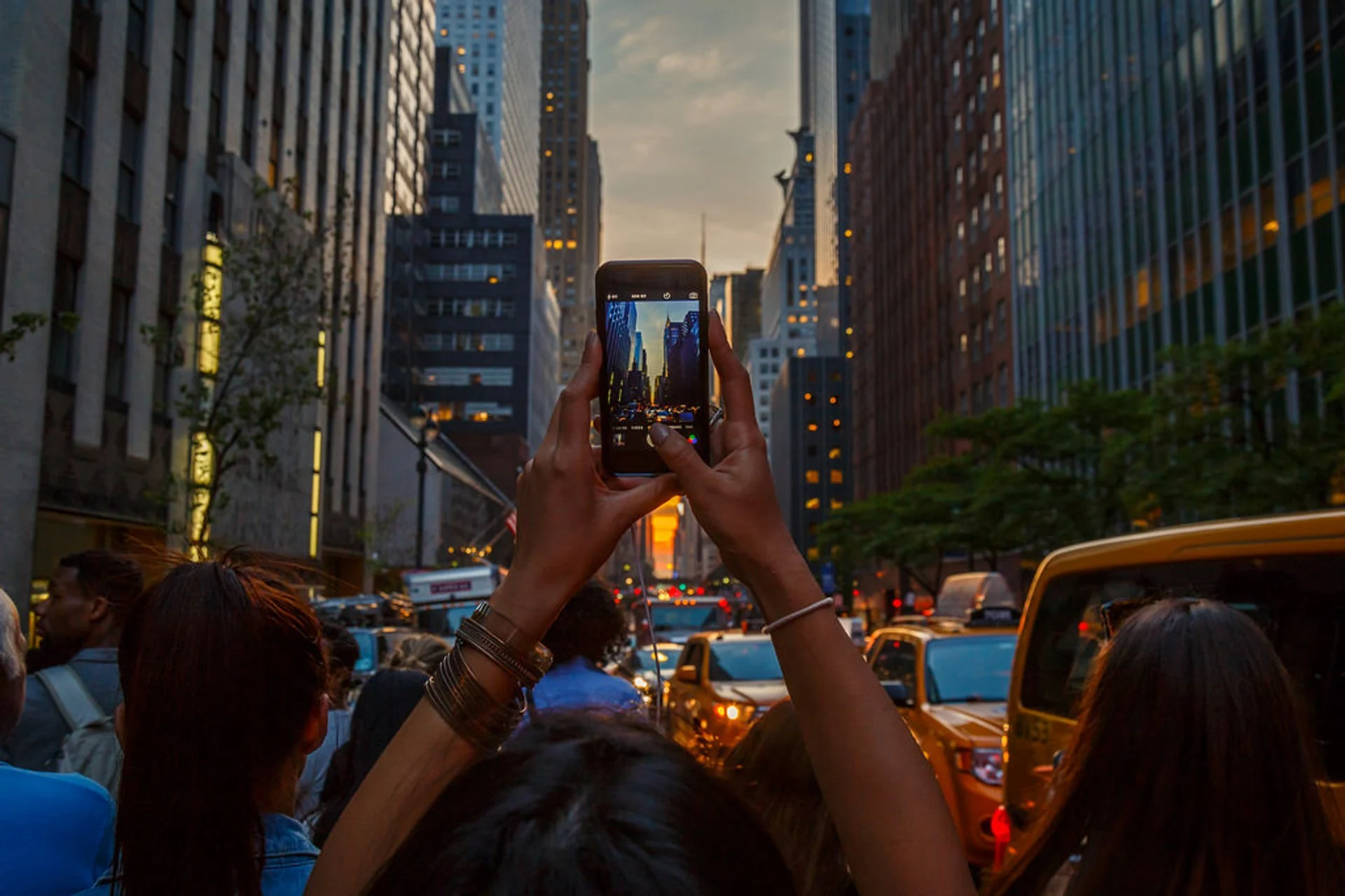
However, Manhattan has several important advantages that make it so popular — the presence of really tall buildings that create the effect of a huge canyon, as well as a clear view of the horizon outside the city grid, which is provided by the Hudson River. And, of course, the incomparably large number of people who admire the event and then post beautiful photos on social media.

